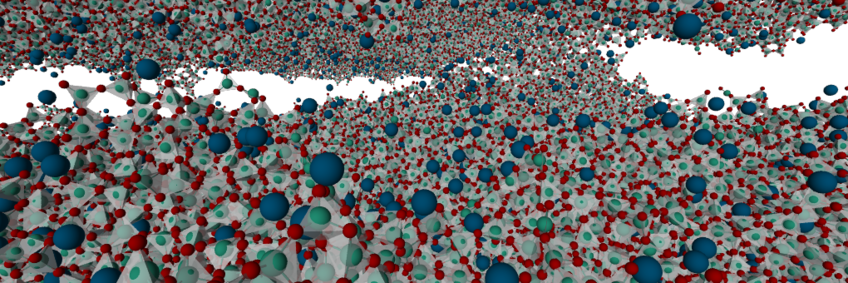
Deformation and Failure of Amorphous Materials
This project aims at understanding the mechanical properties of glasses on the basis of their structure and the relevant atomic-scale deformation mechanisms.
Amorphous, inorganic materials can show extremely high strengths but usually suffer from very limited fracture toughness. The recent years have seen a rising demand for ultrastrong, damage-resistant glasses. However, a significant increase in toughness for new glassy materials will only be possible with a new level of conceptual understanding of the underlying deformation mechanisms and their relationship to the local structure and network topology. Introducing structural anisotropy by thermo-mechanical processing provides a novel route to design glasses with tailored mechanical properties.
The aims of this research project are to investigate how mechanical loads induce transient and persistent structural changes leading to anisotropy, identify the atomic-scale deformation mechanisms behind these changes and how they are influenced by modifiers, and to in turn understand how the changed structure influences the mechanical properties.
For this purpose, we use large-scale atomistic simulations of silica, (meta-)phosphate and bulk metallic glasses and discuss the results in the context of in-situ nanomechanical tests as well as macroscopic experiments. The project is part of the Priority Program Topological Engineering of Ultra-strong Glasses (SPP 1594) of the German Research foundation DFG.